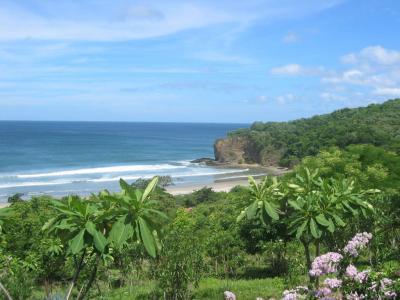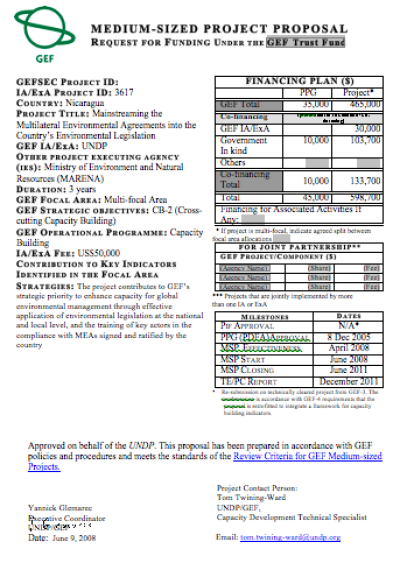The Republic of Nicaragua is the largest country in Central America, with an area of 129,494 square kilometers (USDS, 2011).149 Home to most of the Central American Volcanic Arc, the geographical variation in the country—from the Pacific Lowlands to the Amerrique Mountains and the Mosquito Coast along the Atlantic Lowlands—has contributed to Nicaragua’s status as a biodiversity hotspot. Nicaragua is extremely susceptible to hurricanes. Other natural hazards include destructive earthquakes, threat of volcanic eruption, and landslides. It is predicted that climate change will result in an increase in the frequency and severity of natural disasters. Therefore Nicaragua is highly vulnerable to the effects of climate change.
The country’s abundant resources support most of its economy, about one-third of which is derived from agriculture, timber and fishing (USDS, 2011). Manufacturing (particularly textiles and apparel), services (retail, hotels and restaurants) and remittances also form a significant portion of the country’s economy (CIA, 2011; USDS, 2011). Social and economic conditions have improved in Nicaragua since 1991 (when the Sandinistas government ended), with its ranking on the UN Human Development Index rising by 25 per cent between 1990 and 2010. Still, Nicaragua remains one of the poorest countries in Central America, with a per capita Gross Domestic Product in 2010 estimated to be US$2,900, and economic gains are uneven within the population (USDS, 2011).
Nicaragua has submitted only one National Communication to the United Nations Framework Convention on Climate Change (UNFCCC) in March 2001. The Communication established the National GHG Inventory with 1994 as its base years, it presents future climate change scenarios for Nicaragua for the 21st century, it includes vulnerability and adaptation studies to climate change for the water sector and it presents mitigation options in protected areas of the country, forestry and agriculture as well as a description of the National Climate Change Action Plan.
A Second National Communication is under preparation and it will include a Second National GHG Inventory with 2000 as its base year, which is already completed.
In December 2007, Nicaragua formulated its National Climate Change Action Plan (PANCC, Spanish acronym) based on a series of studies on vulnerability, mitigation options and climate change impact, whose objective is to develop adaptation measures for the most vulnerable sectors of the economy, such as agriculture and water resources and to contribute to the mitigation of GHG gases, particularly in the forestry sector.
Nicaragua is in the process of publishing their first National Climate Change Strategy. The Strategy was conceived with the help of UNDP and the Embassy of Denmark and the main vulnerabilities taken into account for Nicaragua and the main actions proposed are focused on extreme weather events, leaving aside the analysis of gradual climatic changes.
Projects Completed
Latest Publications
See allUnder the auspices of the GEF intervention, the proposed Project will strengthen the national judicial system and adjust it to present-day changes…




